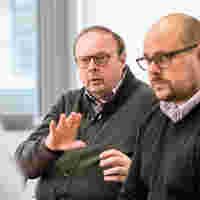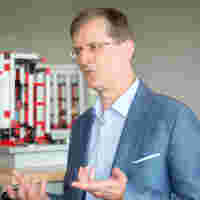The question is very complex, almost to the point that it can hardly be answered comprehensively. Let’s start with Industry 4.0. This does not mean that one can buy products that are “Industry 4.0 ready” – instead, it describes implementing a comprehensive strategy that extends from design to operation. This is more complex and significantly more comprehensive than mere automation.
Smart Factory assumes digital communication across an entire corporation. Coordinating business processes and freely exchanging data without side effects are all part of this. However, business processes are usually not in any type of digitizable form, so an actual exchange between corporate entities is impossible. Confidentiality while developing digital business processes includes proprietary knowledge, which must be secured in all circumstances.
Industry 4.0 demands a design that encompasses the entire corporation. In many sectors, this foundation has not yet been developed to the extent that plug-and-produce would even be possible. Similar to the exchange of data in business processes, engineering also has very high demands for confidentiality. Security has the highest priority here as well.
The use of diverse, production-relevant data assumes a Big Data approach – once you think it through. However, most companies have yet to arrive at this point. Data is often kept at the local level for good reasons. Ultimately, production data has a lot to say about the performance of equipment, infrastructures, units and even people. Many questions have yet to be answered with regard to this – particularly those with societal implications.
In summary, one can state with confidence that the high degree of networking in all sectors of production – from design and engineering, to production, up to life cycle maintenance – will be extremely challenging. Security will play a decisive role at all levels. In fact, security is becoming a key discipline of automation technology for all Industry 4.0 approaches.
Keeping all of this in mind, the question regarding “challenges” is easy to answer: We will have to learn to manage new levels of complexity. A security level appropriate to the respective security requirements must be implemented. And employees must learn to embody security – they must internalize and intrinsically implement security goals.





